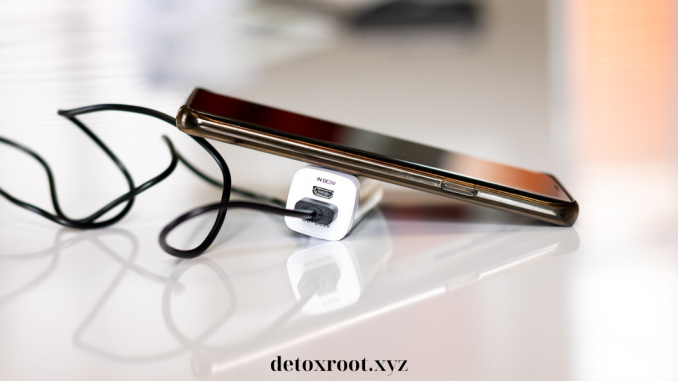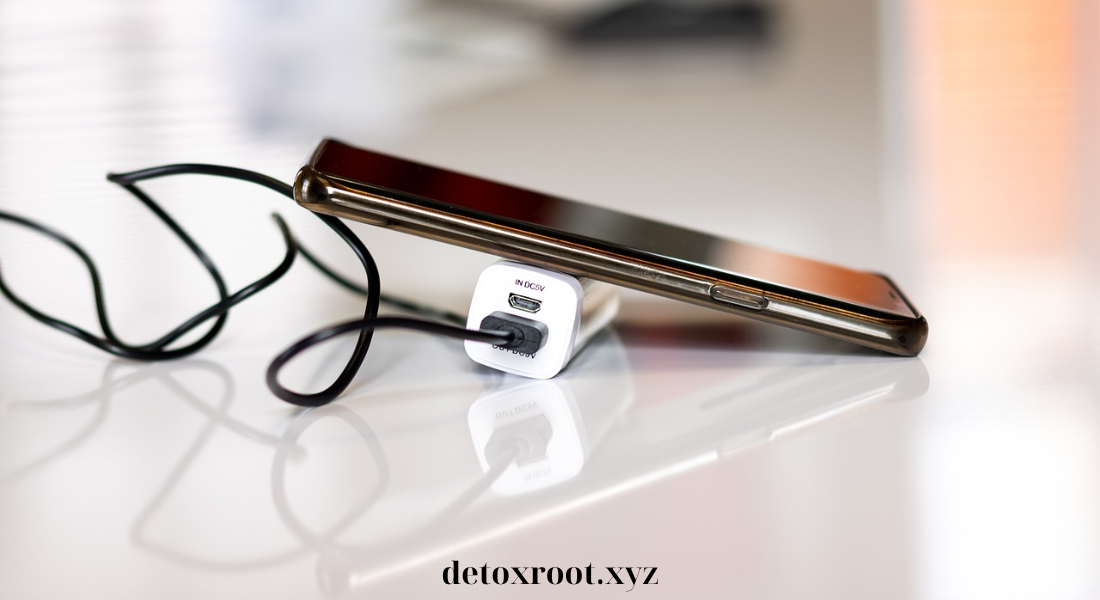
Introduction
In a world where convenience is key, the Wireless Charger has become a game-changer in mobile technology. With no cables to tangle and no plugs to insert, a wireless charging system simplifies the process of keeping your devices powered up. From phones and smartwatches to earbuds, this innovative technology has revolutionized the way we think about charging. In this comprehensive guide, we’ll explore everything you need to know about Wireless Chargers, including how they work, the benefits they offer, and tips for choosing the best one for your needs.

What is a Wireless Charger?
A Wireless Charger is a device that transfers power to a compatible device without the need for a physical cable connection. It uses a technology called inductive charging, where an electromagnetic field generates energy that’s transferred from the charging pad to the device. Most of today’s wireless chargers use the Qi (pronounced “chee”) standard, which is supported by major manufacturers like Apple, Samsung, and Google.
How Does a Wireless Charger Work?
The process behind a Wireless Charger is surprisingly simple. Here’s a breakdown of how it functions:
- Electromagnetic Induction: The charger has a coil inside that generates an electromagnetic field when connected to a power source.
- Receiver Coil: Your device must also have a receiver coil that aligns with the charger’s coil.
- Energy Transfer: When the device is placed on the charging pad, the electromagnetic field transfers energy to the device’s coil, which converts it into electrical power, charging the battery.
- Automatic Detection: Many modern wireless chargers automatically detect when a device is in place and begin charging without any manual input.
Benefits of Using a Wireless Charger
Opting for a Wireless Charger offers several advantages that make it a preferred choice for many users:
- Convenience: There’s no need to fumble with cables or ports. Simply place your device on the charger, and it begins to power up.
- Reduced Wear and Tear: Since you’re not frequently plugging and unplugging your device, the wear on charging ports is minimized, extending the device’s lifespan.
- Decluttered Space: A Wireless Charger helps reduce cable clutter, giving your workspace or nightstand a cleaner look.
- Universal Compatibility: Many wireless chargers support multiple devices, so you can charge a smartphone, smartwatch, and earbuds on the same pad.
Types of Wireless Chargers
Wireless chargers come in a variety of designs and formats to fit different needs. Here are some of the most common types:
- Charging Pads: The most common type, charging pads are flat and compact. Just lay your device on top, and it starts charging. Great for desks and nightstands.
- Charging Stands: These hold your device upright, making them ideal for those who want to keep their phone visible while charging, such as at a work desk or kitchen counter.
- Multi-Device Chargers: These chargers are designed to power up multiple devices simultaneously, making them perfect for households or individuals with several gadgets.
- Portable Wireless Chargers: Ideal for travel, these chargers come with a built-in battery that allows you to charge wirelessly on the go.
How to Choose the Best Wireless Charger
When it comes to selecting the right Wireless Charger, several factors come into play. Here’s what to consider:
- Charging Speed: Different chargers have varying wattage levels, affecting how fast they can power up your device. Choose a charger that supports fast charging if your device is compatible.
- Build Quality: Look for a sturdy, well-built charger that won’t overheat or break easily. Materials like aluminum and high-quality plastic are often more durable.
- Compatibility: Ensure that the Wireless Charger supports the Qi standard, as it’s compatible with the majority of devices.
- Design: Aesthetics matter, especially if the charger will be a permanent fixture on your desk or bedside. Choose a style that matches your space.
- Additional Features: Some wireless chargers offer extras like LED indicators, cooling fans, or even UV sanitizers. Consider if these features are important to you.
Top Brands for Wireless Chargers
Several reputable brands have established themselves as leaders in the wireless charging market. Here are some top brands to consider:
- Anker: Known for reliable, affordable, and efficient charging solutions, Anker offers a wide range of Wireless Chargers that cater to different needs.
- Belkin: Belkin provides high-quality chargers, often collaborating with Apple to create optimized solutions for iPhones and other Apple products.
- Samsung: A leader in the mobile industry, Samsung offers a variety of wireless chargers that are designed to work seamlessly with its lineup of phones and accessories.
- Mophie: Specializing in sleek and stylish chargers, Mophie is a top choice for those looking for aesthetically pleasing and functional charging pads.
The Future of Wireless Charging
The world of Wireless Chargers is constantly evolving, with new advancements promising even greater convenience. Some of the upcoming trends include:
- Long-Range Wireless Charging: New technology aims to allow devices to charge from a distance, without needing direct contact with a charging pad.
- Faster Charging Speeds: As technology improves, so does charging speed, reducing the time it takes to power up your device.
- Integrated Charging Solutions: Expect to see wireless charging integrated into more everyday objects like furniture, cars, and public spaces, making it even more accessible.
- Eco-Friendly Options: Many manufacturers are beginning to focus on creating sustainable, eco-friendly Wireless Chargers with recyclable materials.
Tips for Using Your Wireless Charger Effectively
To make the most of your Wireless Charger, follow these best practices:
- Align Your Device Properly: Ensure that your phone or gadget is centered on the charging pad to avoid slow charging or interruptions.
- Remove Phone Cases if Necessary: Some thick or metal cases can interfere with wireless charging. Use a compatible, slim case or remove it during charging.
- Keep the Charger Clean: Dust or debris on the charging pad can affect performance. Wipe it down regularly to maintain optimal function.
- Avoid Overheating: If your charger gets excessively hot, give it a break or switch to a different surface to avoid potential damage.
Frequently Asked Questions about Wireless Chargers
Q: Can all phones use a Wireless Charger?
A: Most modern smartphones, including iPhones, Samsung Galaxy, and Google Pixel devices, support the Qi standard. Always check if your phone is compatible before purchasing.
Q: Do Wireless Chargers charge slower than wired chargers?
A: In general, wireless charging is slower than wired charging, but advances in fast-charging technology have narrowed the gap. High-quality chargers now offer competitive charging speeds.
Q: Will a Wireless Charger work with a phone case?
A: Many wireless chargers work with standard cases, but metal or overly thick cases may interfere. Use a case designed to be compatible with wireless charging for best results.
Q: Can I charge multiple devices at once with a Wireless Charger?
A: Yes, multi-device chargers are available that can handle phones, earbuds, and smartwatches simultaneously. These chargers are ideal for households with multiple gadgets.
Q: Is it safe to leave my phone on a Wireless Charger overnight?
A: Most modern wireless chargers have safety features like auto shut-off when your device reaches full charge. This makes it safe to leave your phone on the pad overnight.
Pros and Cons of Using a Wireless Charger
As with any technology, there are advantages and disadvantages to using a Wireless Charger. Here’s a breakdown:
Pros:
- Ease of Use: Just set your device down—no need for cables.
- Reduced Wear: No frequent plugging and unplugging, leading to less wear on charging ports.
- Cleaner Look: Eliminates messy cables, providing a tidy charging area.
- Universal Compatibility: Many chargers support a range of devices, reducing the need for multiple cables.
Cons:
- Charging Speed: Typically slower than wired charging, though high-speed models are available.
- Alignment Sensitivity: Incorrect placement can result in inefficient charging.
- Case Compatibility Issues: Some phone cases might block the charge.
- Slightly More Expensive: Wireless chargers can cost more than traditional wired options.
Conclusion
The Wireless Charger has reshaped how we keep our devices powered, offering a blend of style and functionality that caters to modern needs. Whether you prioritize speed, design, or the ability to charge multiple gadgets at once, there’s a wireless charging solution to match every lifestyle. As technology continues to evolve, wireless charging will likely become even more efficient, accessible, and integrated into everyday life.
By understanding the basics of Wireless Chargers, the benefits they offer, and how to choose the right one, you can enjoy the freedom of hassle-free charging. Embrace the future of technology and cut the cords—literally—with a Wireless Charger that suits your needs.
This guide should give you all the insight needed to make an informed decision on choosing a Wireless Charger that will power your tech efficiently while enhancing your everyday convenience.
Leave a Reply